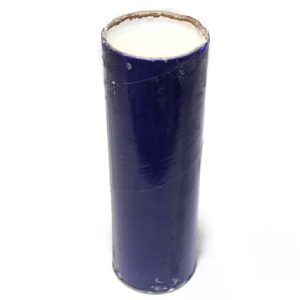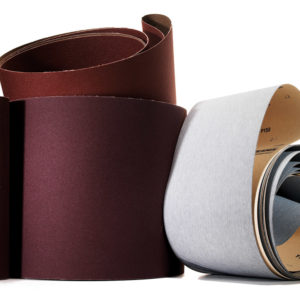Aerospace abrasive sponges are flexible pads with an integrated grit. They’re effective on both flat and curved or contoured surfaces, and you can use them for wet-sanding or dry-sanding. They’re more durable than sandpaper and are reusable. Sanding sponges with channels built into the surface help keep the abrasive from becoming clogged with dust.
The sanding sponge is a combination between the sanding block and sandpaper. However, the two are not entirely interchangeable, as I will explain in later sections.
Let’s go over several types of sanding sponges:
- Variable grit sanding sponges
- Dust channeling sanding sponges
- Corner sanding sponges
Let’s explore each of these sanding sponges in more depth.
Standard Variable Grit
These sanding sponges are the everyday sanding tool. Similar to regular sandpaper, sanding sponges come in various grits.
Sanding sponges are just like regular sandpaper; the lower the number, the rougher the grit, and the more material the sanding sponge will remove. Likewise, higher grits will give you a smoother finish but remove less material.
There are also various sizes of sanding sponges. Some are large and fill up your whole hand. Larger sponges are useful for smoothing out drywall or preparing furniture for paint.
Smaller sanding sponges work well for detail work. Maybe you like to make small wooden crafts, and you need to keep your sanding precise – this is the time to go small.
Dust Channeling
Dust channeling sanding sponges help prevent dust build-up when sanding.
If you’ve ever used any sandpaper, you know that it’s difficult to keep the abrasive portion of the sandpaper clear. When dust clogs the sanding surface, you can’t get anything done. Essentially, you’re just smearing dust around your project.
To eliminate this problem, or at least reduce it, sanding sponges were developed with channels. These channels look like diamonds on the surface of the sponge. The channels allow a place for the dust to collect without clogging everything up.
You will pay a little more for the dust channels, but it might be worth the extra cost if you need maximum efficiency.
Corner Sanding Sponges
Finally, we have corner or wedge-shaped sanding sponges. These sanding sponges have a beveled edge that allows you to sand in tight places.
If you’re trying to sand the grooves on a piece of trim, or you have a tight corner, then the beveled sanding sponge gives you an advantage as they can place pressure in tight places.
Alright, now that we’ve gone over the different types of sanding sponges, let’s talk about some of the pros and cons of using them.
Benefits of Using an Aerospace Abrasive Sponge
Sanding sponges provide comfort and efficiency. When you need to sand all day, you don’t want your hand to be all torn up.
In this section, I break down some of the best reasons to use a sanding sponge. As you’ll see, sanding sponges have a ton of advantages. However, they also have some downsides. We will discuss the cons of sanding sponges in a later section.
For now, here are the best reasons to use a sanding sponge:
- Sanding sponges are comfortable
- Sanding sponges are fast
- Sander sponges with dust channeling surface
- Sanding sponges can reach in tight corners
- Sanding sponges resist damage




